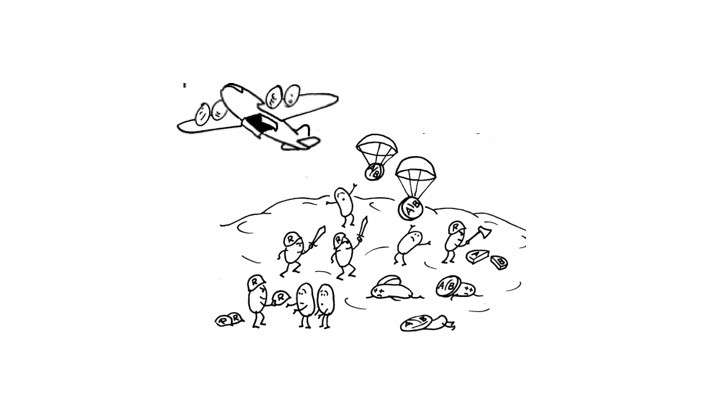This article was written by Susanna Sternberg Lewerin, Professor in Epizootiology & Disease Control at the Department do Biomedical Sciences & Veterinary public Health, SLU.

Today is the Antibiotic Awareness Day. It is a day to be grateful for these important medicines, and to consider how to best preserve them for the future.
Antibiotics, drugs to combat bacteria, are useful tools in both veterinary and human medicine. They allow us to treat bacterial infections in animals and people, common diseases as well as those that occur due to immunosuppressive treatments such as cancer therapy or following transplant surgery. The problem is that all use of antibiotics kills the susceptible bacteria and leave the field open for those who have become resistant to the antibiotic. In a successful treatment course, the few remaining (resistant) bacteria can be killed by the host’s immune system and the host, animal or person, is cured. On the other hand, if the majority of the disease-causing bacteria are resistant, the treatment will be ineffective.
To preserve antibiotics as medical tools, we must use them as little as possible, only when needed, in the correct dose so that enough of the drug reaches the body site where the bacteria are causing the disease, and only for the time needed, until the immune system has eliminated the disease-causing bacteria. This is not as easy as it sounds, it takes insight into what diseases cause problems in animals and people in different settings, how to prevent them and how to treat them effectively, with or without antibiotics.
In Sweden, disease prevention is a key feature of veterinary medicine. Good animal husbandry, good biosecurity, vaccination and other strategies to control and prevent disease has been and continues to be a major research focus. We also collaborate in EU projects where different practices, attitudes and societal systems present new challenges that can be addressed by learning from the Swedish experiences (successes as well as failures) and by new ideas and innovations.
In low-income countries, antibiotics are not restricted to prescription from a veterinarian or a doctor but can be bought over-the-counter in drug stores where the products can be of poor quality and the information about how to use them may be lacking or misleading.
Poor farmers sometimes use the volume intended for treatment of one animal to treat several animals (i.e. with a lower dose), rendering the treatment ineffective and paving the way for resistant bacteria without curing the disease. If no veterinarian is involved in determining the cause of the disease, antibiotics may be used to treat diseases that are not caused by bacteria, so that the treatment is a waste of money and, again, promotes the resistant bacteria.
We collaborate with researchers in low-income countries on how to prevent and control animal diseases. We also work on developing systems for monitoring of diseases and antibiotic use, to provide information about what diseases are common and which antibiotics are used effectively. This project also addresses ways to increase the interaction between veterinarians and farmers by video consultations, to facilitate farmers’ access to veterinary advice on disease treatments while improving profitability for both groups.
It is important to recognise the need for different strategies in different settings, disease prevention and control rely on knowledge of the local situation and its context-specific challenges and opportunities. Still, the worries and hopes of farmers are similar in countries all over the world and serve as incentives for improvement of animal health and production. The long-term goals of our research focus on animal health and welfare, for a sustainable animal production with a sustainable use of antibiotics. We must all contribute to preserving antibiotics for the future. Don’t let it be nobody’s responsibility, it lies with everyone.
